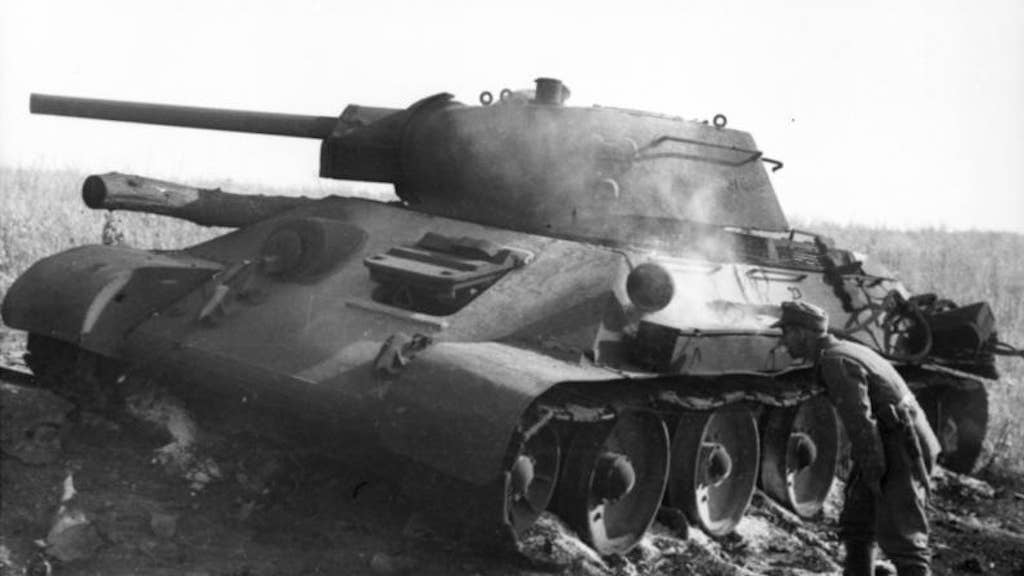Russian tank crews have a history of using this insane tank battle tactic

A T-34 destroyed at the Battle of Prokhorovka, 1943.
SUMMARY
The tank battles between Nazi Germany and the Soviet Red Army on the Eastern Front of World War II are the stuff of legend. Some of the most pivotal battles were fought there, along with some of the largest tank battles ever. As the war progressed and the tides shifted, both sides began to think of new tactics to help them get the edge over their brutal enemy.
The Soviet Union was well-known for one insane tank battle tactic in particular, one used countless times to great effect, even though it had the very good chances of killing both tank crews: ramming.
Tanks, even today’s modern main battle tanks, are very useful for clearing a path forward through brush, barricades, walls and even buildings. Their massive tonnage and armor make them perfect for bulldozing a path forward for the infantry who support them. The Soviet Union, in its desperation to inflict heavy casualties on Nazi invaders, even turned to ramming enemy tanks.
The first time a Soviet tank crew decided to ram an enemy tank with their own, the USSR wasn’t even technically at war. Soviet troops deployed to Spain during the 1936-1939 Spanish Civil War. The war on the Iberian Peninsula pitted Fascist troops from around Europe against Socialist and Communist troops and volunteers from around the world.
Soviet Premier Joseph Stalin sent aircraft, tanks, and artillery to support the Republican cause in Spain. He also sent Soviet troops. On Oct. 29, 1936, a tank company under the command of Soviet Capt. Pol Arman was fighting tanks sent by Fascist Italy for the Nationalist side. Arman’s main turret jammed during the fighting. An Italian flamethrower tank moved into position to fill Arman’s vehicle when a Soviet T-26 rammed it from the side, pushing it tumbling into a ravine until it exploded.
Ramming isn’t novel to the Russian Army, but given the risks involved to the crew inside the ramming tank, it’s not a measure to be taken lightly. One might never know that, given how often Russian tank crews use the tactic. Though many tank crews from many countries were documented ramming enemy tanks, the Russians used it more than 700 times throughout World War II.
The reason the Russians were so apt to ram an enemy is because tank crews were instructed on how to do it and when the best opportunities to ram an enemy could be identified. Tankers learned during training and tank officers learned in Soviet war colleges. The latter, however, were taught how to do it so they could take an enemy out of action with minimal harm to themselves.
While fighting in Ukraine, outside Moscow, and at the Battle of Kursk, Soviet crews rammed Nazi tanks, sometimes more than two or three times during the battle. The tactic could push tanks into anti-tank ditches, disable tank tracks or even kill the enemy crew entirely. The heavier the tanks, the more damage to the target tank – and the higher the potential for killing the ramming tank’s crew.
In one instance, a Soviet tank crew got even more creative with the tactic. An armored Nazi train was traveling through Byelorussia, holding off an advance by Russian troops against a German position there. In the middle of the fighting, a T-34 tank broke through the battlefield, burning, and rammed the armored German train.
The train derailed, sending three cars and their German infantrymen flying. The scene was enough to draw attention immediately, allowing the other Russian tanks to mow through the German defenses and push on through to the nearby town. The tank crew inside that T-34, however, died.
SHARE
